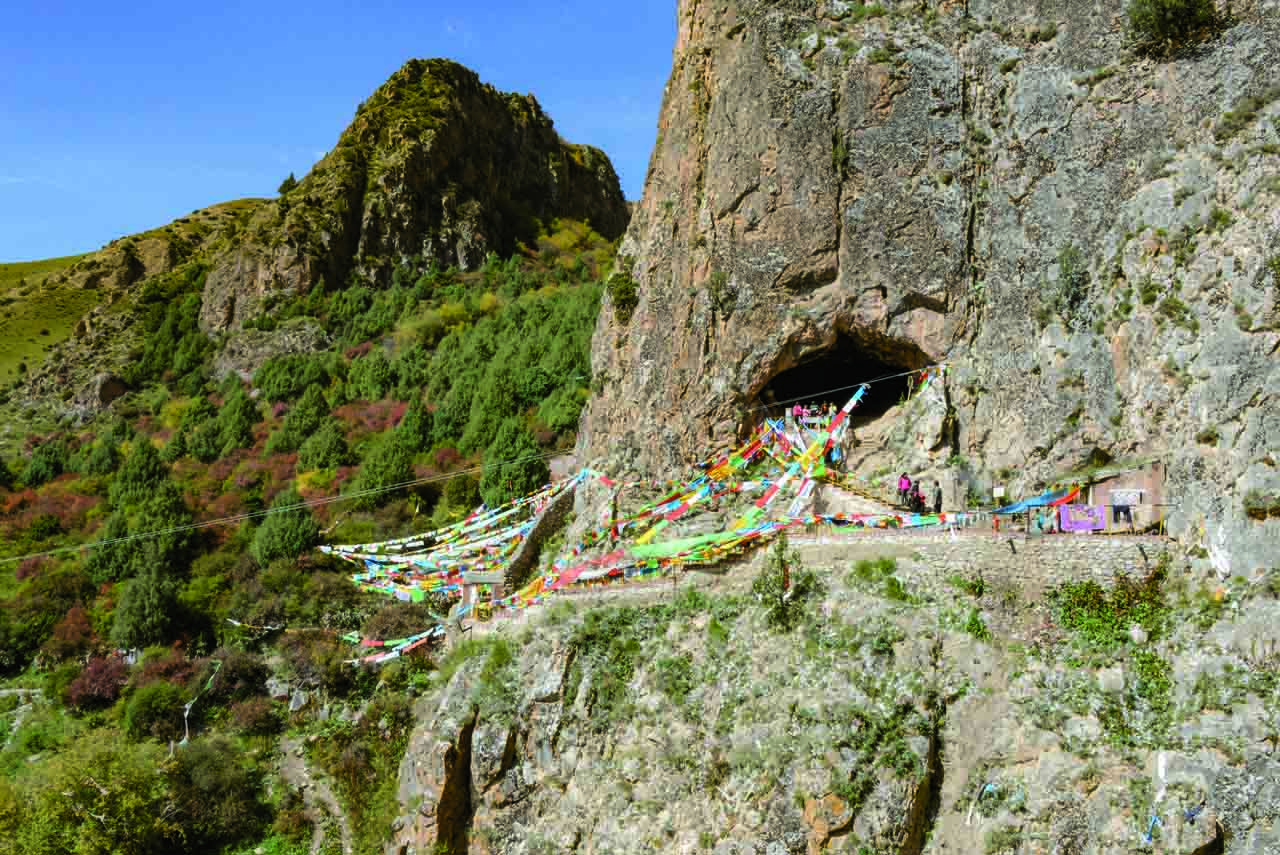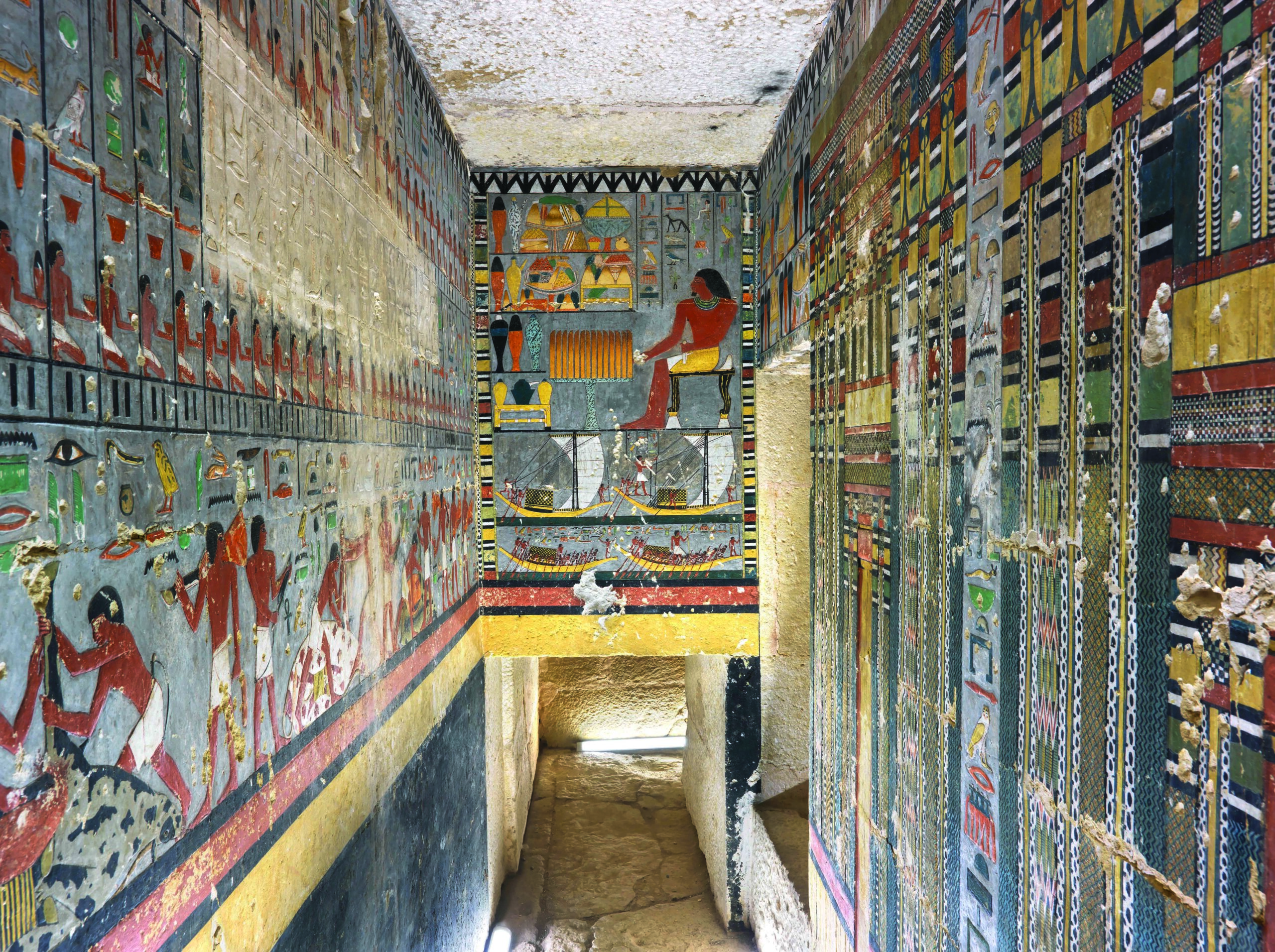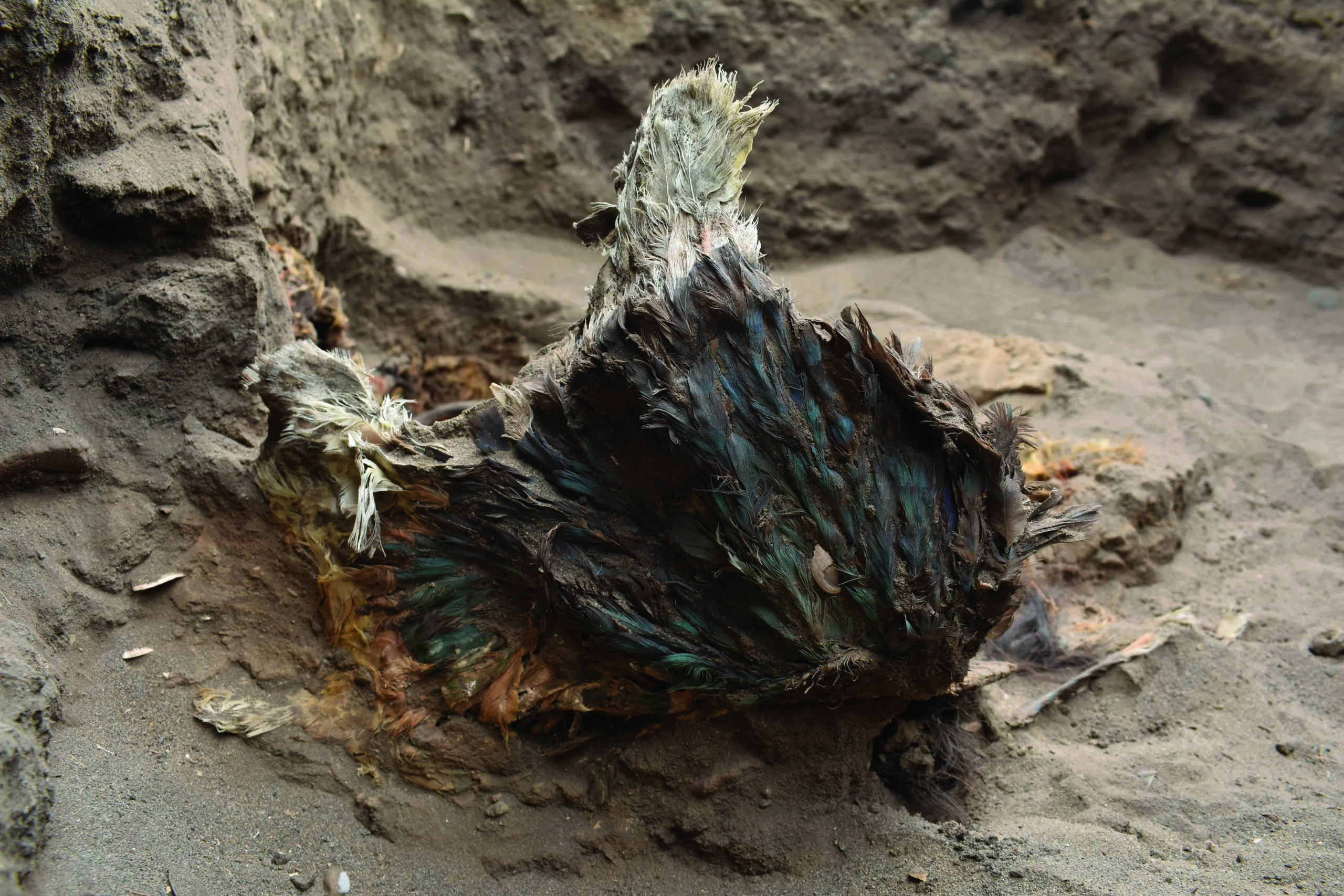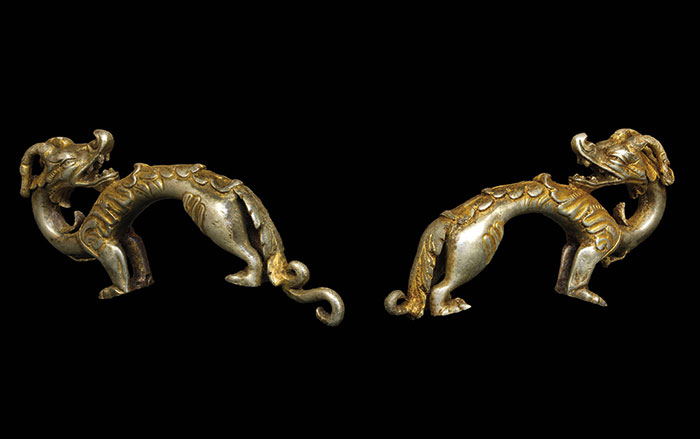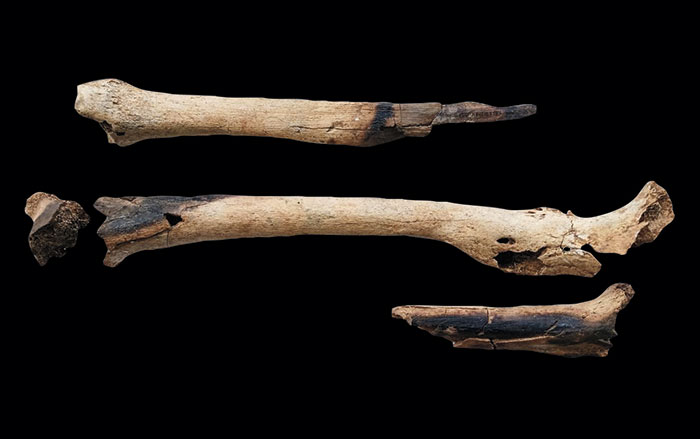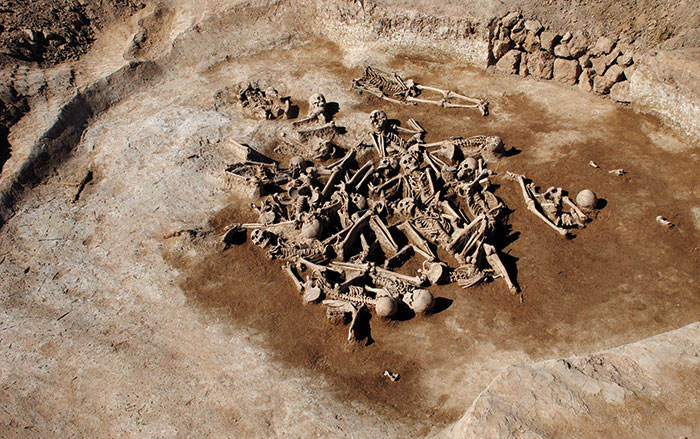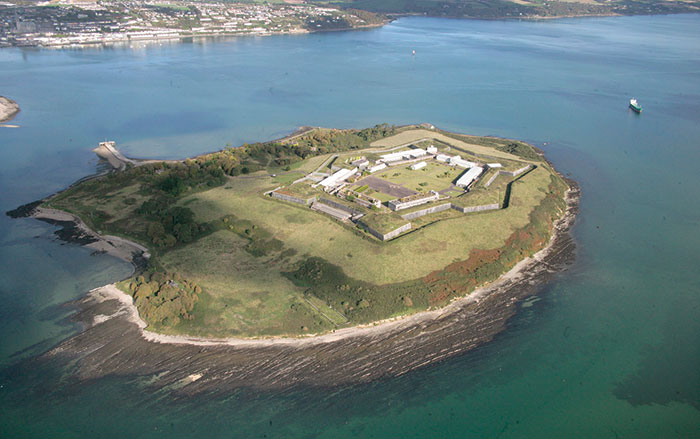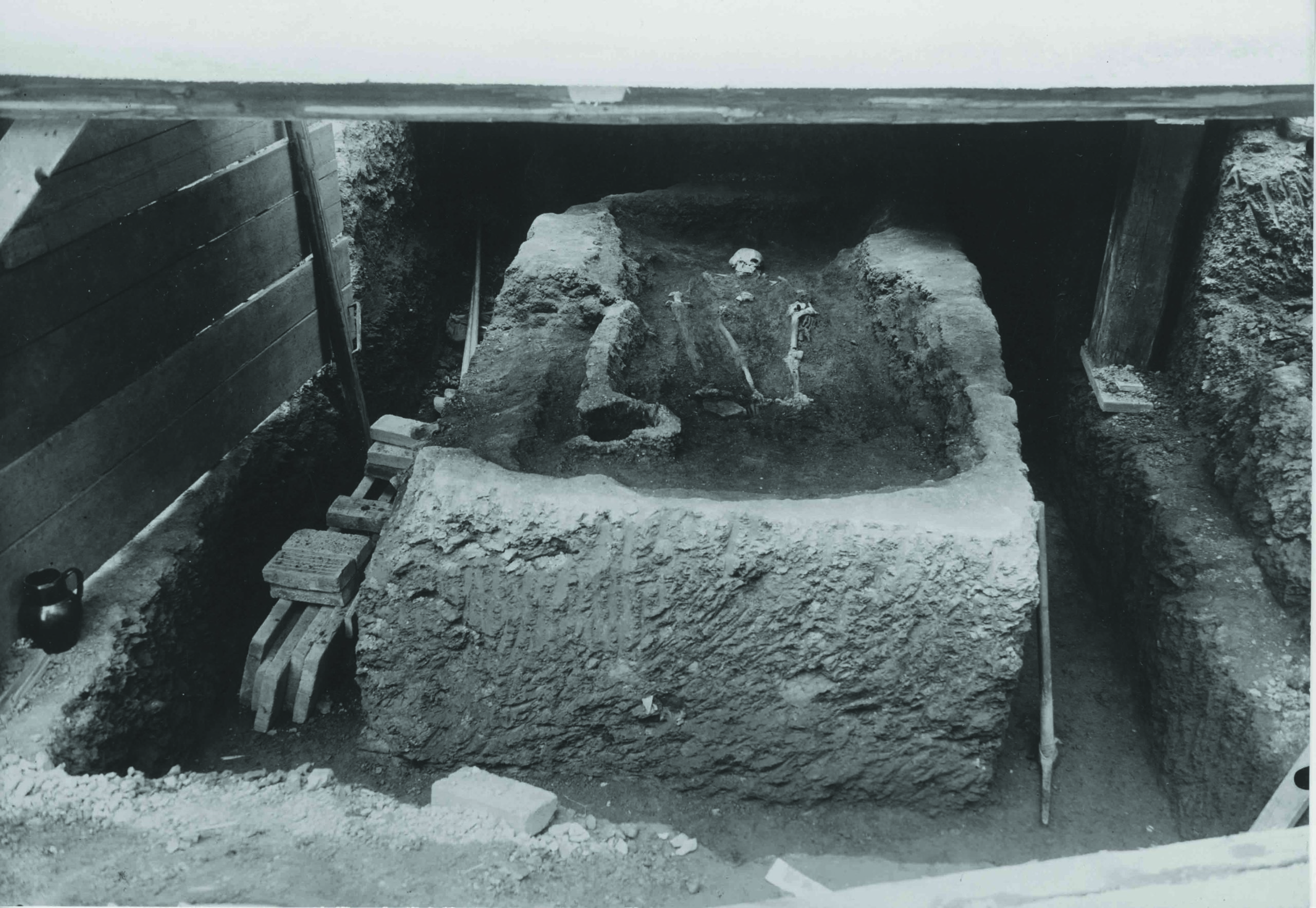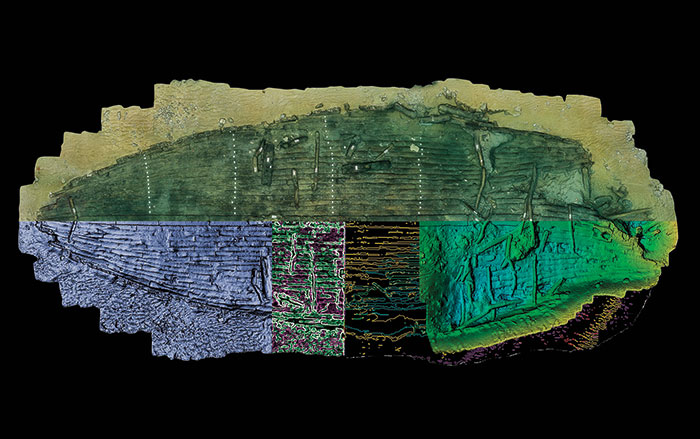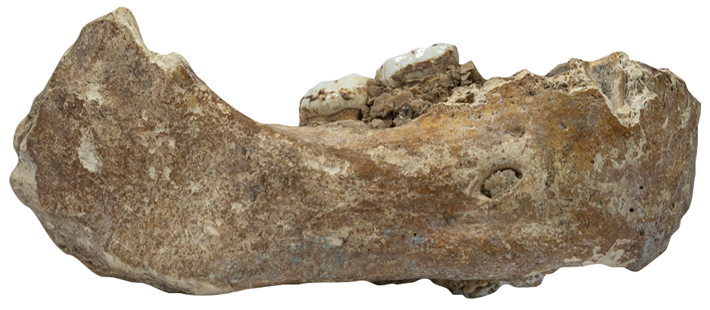
Some 40 years ago, a Buddhist monk uncovered a mandible in Baishiya Karst Cave, more than 10,000 feet above sea level on the Tibetan Plateau. The specimen has now been dated to 160,000 years ago, and analysis of proteins from its teeth indicates that it belonged to a member of the hominin species known as Denisovans. These elusive ancient humans were previously known only through fragmentary remains of several individuals, all of which were found in southern Siberia’s Denisova Cave, which is just 2,300 feet above sea level and almost 1,750 miles northwest of Baishiya Karst Cave. “This mandible reveals that Denisovans were geographically distributed much more widely and at higher altitude than we previously thought,” says archaeologist Dongju Zhang of Lanzhou University.
Earlier studies of Denisovan genetic material had detected a mutation that fosters survival in low-oxygen environments found in extremely high-altitude locations such as the Tibetan Plateau. This same mutation has been identified in present-day Tibetans, and the discovery that Denisovans once inhabited the region may explain how they obtained this life-preserving adaptation.
